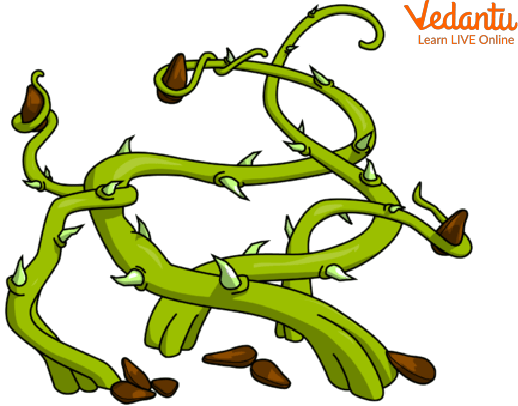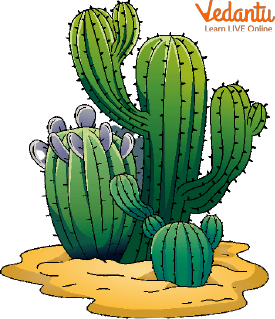




Overview of Plant Defences
An important part of our life is played by plants. There wouldn't be any life left on Earth without plants. There are currently between three and four lakh recognised plant species, and the number is growing.
They give us a wide range of items to meet our daily needs, such as food that we eat, air to breathe, clothing to cover our bodies, wood, medicines, shelter, and many more things for the good of humans. There are ways in which plants defend themselves against potential danger. In this article, we will read about those ways only. Let’s see the mechanism of plant defences against herbivores and all the other dangers.
Plant Defences
Plants continuously protect themselves against viruses and herbivores, or animals that wish to consume them. They have evolved chemical and physical defences that prevent them from becoming eaten as well as from being infected by diseases and becoming ill.
Types of Plant Defences
Given below are the few mechanisms by which plants defend themselves. Let’s take a look at the plant's defences against herbivores, diseases etc.
Thorns
Basically, thorns are sharp branches or stalks. Their protective function—that they are stabby—is somewhat obvious. In addition, not one rose has one, despite what (the band), Toxic would have you believe.

Thorns as Plant Defence
Prickles
Roses don't have thorns; they have prickles. Privets, in contrast to thorns, are actually angular protrusions from a plant's epidermis. Imagine them as sharp freckles.
Spines
In addition to flowers, leaves have developed to draw blood. Although many vegetation has spines, the cactus, which has many of them, is the one most famous for using them.
Trichome
Trichomes to protect themselves from being browsed, nettles and other plants develop a bristling pelt of these pointy structures.
Mutualism
Some factories have chosen to employ mercenaries. Several types of acacia trees in Africa and South America provide homes for and food sources for hostile ants.
Poison
That some flora is poisonous is common knowledge. However, what one creature perceives as a "poison" may as well be an intrinsic factor to another. For instance, birds don't appear to mind the poisonous oil generated by poison ivy, known as urushiol, and actually seem to enjoy the berries that the plants produce.
Chemical Plant Defences
Plants create defensive metabolites that reduce the edibility of cells in which they are produced but do not affect normal vegetable growth and development. They can be produced in response to an insect or microbial attack or kept continuously in inactive forms. The defensive compounds are bioactive, specialised substances that are used to defend plants from herbivores. These substances can target systems specific to herbivores, like the nervous, digestive, and hormonal organs, and they may serve as deterrents for generalist herbivores while forcing specialists to spend resources on detoxification mechanisms.

Plant Defence Mechanism
Fun Facts About Plant Defences
Today's medications are often produced from substances that plants use as defence mechanisms.
Some plants serve as homes for creatures that hunt herbivores that would consume the plant.
Because producing defence compounds requires a lot of energy and nutrients, plants may wait to make them until they are attacked.
Chemicals produced by cotton combat bacteria and fungus.
Chemicals are occasionally used by plants to prevent other plants from invading their territory.
Summary
Plant defences are modifications that lessen the harm and death brought on by diseases and herbivores. Here, we listed the various traits that have a defence role in plants. Most noticeable are the chemical defences that plants employ to fend off or poison their predators. We also learned about the physical barriers, such as spines and trichomes, that stop herbivores from consuming plant tissues, as well as mutualisms in which plants provide food or a home for ants, other arthropods, or fungus in exchange for the animals' defensive assistance, are also significant. Let’s wrap this article with this. We hope you enjoyed reading this article, in case of any other doubts, feel free to ask in the comments.
FAQs on Plant Defences
1. What do plants protect themselves against?
Animals and plants both need to protect themselves from pathogens, which are diseases causing bacteria, viruses, and fungi.
2. How does an infected plant react?
When a pathogen infects a plant, the root-associated bacteria's antifungal gene expression is increased.
3. Do plants experience pain?
Plants do not experience pain in the same way that we do as part of the animal kingdom because they lack pain receptors, nerves, and brains. You can eat that apple without fear, and plucking a carrot or cutting a shrub is not a kind of botanic torture.
4. Are there nerves in trees?
Despite not having nerves, plant cells can still produce nerve currents called action potentials, much like animal nerve cells can.









